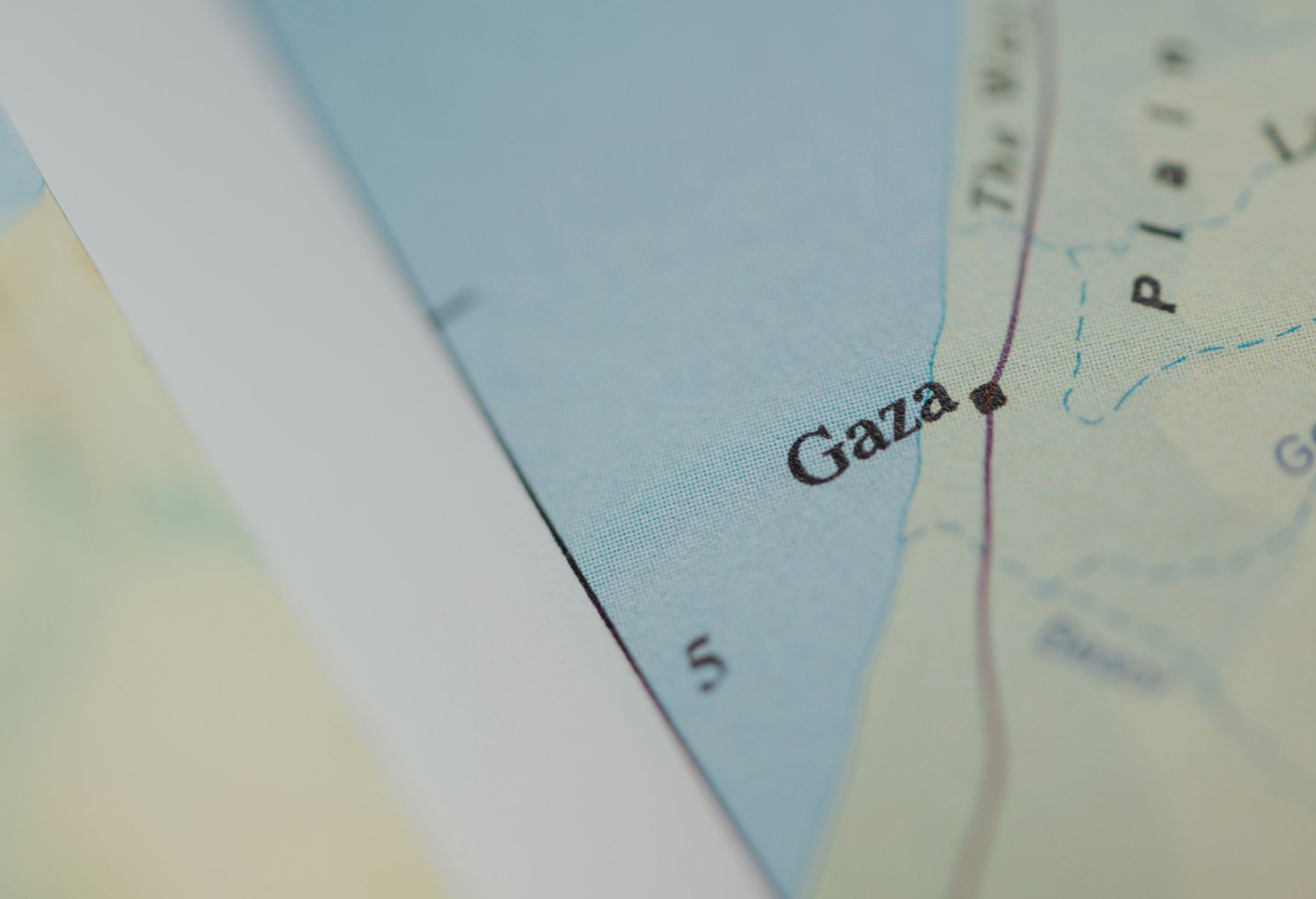Is Palestine the “Compass”?
24th Sep 2024 by Toni Rouhana

Following years of sectarian tensions and violence, a recent poll has sparked discussions about a potential shift in Sunni-Shi’a relations and increased unity within Lebanon’s Muslim communities.[1] This survey, conducted by the Washington Institute for Near East Policy between November 14 and December 6, 2023, revealed a 24% increase in favourable views by the Sunni population of Lebanon towards Hezbollah compared to the 2020 poll. Pundits and commentators have been highlighting this phenomenon as a “Sunni Shi’a bond” and “Islamic unity” that has undone almost two decades of sect-based hatred, opposition, and sectarian violence.[2] In order to trace the effect of specific events on this relationship, many surveys attempt to measure the fluctuating bond, for example, SEPAD published a report in 2021, based on a survey conducted in conjunction with The Other Islamists project that explores the impact of the pandemic on social relations in Lebanon. While the SEPAD/TOI data shows that there were several issues that had resulted in significant shifts in opinion, the Sunni-Shi’a divide was not a major national issue.
In this short piece, I ask how we, as researchers, might understand the workings of sect identities in Lebanon in the wake of October 7th. I examine whether the Palestinian cause is, as the slogan goes, “the compass ” and as such, whether scholars should consider October 7th as an event–in Badiou’s sense–that will reshape sect-based relations. In other words, is it possible to read October 7th as an event that will bring a lasting cohesion between Sunnis and Shi’as in Lebanon, or will it, as it has in the past, revert to its sect-based chasms that have long dictated these relations?
In what follows, I situate the use of the slogan “the Palestinian cause as the compass” within discourses of Arab Nationalism and political Islam to understand it in the context of October 7. Then, I describe the manifestations of that “compass,” especially when it comes to the sect-based Sunni-Shi’a chasms in Lebanon before and after October 7th. I lean on a concept I have developed elsewhere, sect habitus, to trace the manifestations and practices of sect identities that delimited the Sunni/Shi’a relationship in Lebanon since 2005 to show how October 7th and its aftermath possibly reshaped these relationships and the sect habitus itself. I propose that this event possibly holds the foundation for a shift in sect-based relations in Lebanon.
Genealogy of “Palestine is the Compass”
During an interview in 1984 in Budapest, in response to a question posed by Dr Radwa Ashour regarding the origins of his renowned character Hanzala,[3] Palestinian cartoonist Naji El-Ali answered that Hanzala was “the arrow of the compass, pointing steadily towards Palestine. Not just Palestine in geographical terms, but Palestine in its humanitarian sense–the symbol of a just cause, whether it is located in Egypt, Vietnam or South Africa.” The slogan also appears in the Palestinian Museum Digital Archive in a 1993 artwork by ‘Adnan Zubaydy entitled “Abu Jihad,” which has the phrase "A compass that doesn't point to Jerusalem is a broken compass" written on the painting. Then, in 2004, Dr George Habash published a farewell to Yasser Arafat in Al-Hayat London, where he said, “Palestine will remain the dream and the compass that will not move the path” to pledge a commitment to the cause that Arafat was leading before his death. Despite these earlier instances, the expression “Palestine as the compass” did not take hold at the popular level until the Arab uprisings of 2010. With the revolutions in Tunisia, Egypt, Libya, Syria, and Bahrain, the question of the stance of these states towards the “Palestinian Cause” became a central one in the aftermath of the uprisings and the rise of the Muslim Brotherhood. In Syria and Lebanon, the Sunni/Shi’a sect-based split [4] regarding the Palestinian question was mobilised by all sides with different aims. During the Syrian revolution-turned-civil war, the claim that “the compass deviated” was used by all sides of the conflict. On the one hand, the Syrian government’s supporters, allies and scepticsraised the slogan, “There is no legitimacy for a revolution; Palestine is not its slogan” against the Syrian opposition and its allies, and on the other hand, Hamas’s move to support the Syrian revolution against the Syrian government created a solid counterargument for the opposition to challenge the government’s claim for supporting the Palestinian cause. In the next section, I show the evolution of this discourse in Lebanon.
Sect Habitus in post-2005 Lebanon
Following my earlier work, I have defined “sect habitus” as the ways in which ordinary people live, feel, experience, and practise their sect identities in various realms of everyday life. In other words, rather than thinking of the Sunni/Shi’a divide as either eternal, as conceptualised by the primordialists, or as a tool that political elites deploy at will to protect or expand their political influence, as conceptualised by the instrumentalists, sect habitus highlights the “objective conditions” in Bourdieu’s parlance under which the system of dispositions produces specific sets of practices. For example, sectarianism in Lebanon used to be exemplified by the Muslim/Christian divide until 2005. In the aftermath of the assassination of Prime Minister Rafik Hariri in February of 2005, the Sunni/Shi’a divide emerged as the demarcation of sectarianism in the local and regional political arena. This divide kept on increasing until it reached its highest point in May 2008, resulting in armed clashes between militants from Hezbollah and Amal (Shi’a) and militants from the Future Movement (Sunni) and PSP (Druze). To be clear, I do not attribute the causes of these armed clashes solely caused by sectarianism, rather, I contend that these clashes highlight the heightened Sunni/Shi’a divide at that time. The Sunni/Shi’a tensions, while not armed, kept increasing post-2008; they took a radical turn during the war in Syria, which did not seep into Lebanon; rather, the Lebanese Sunni/Shi’a conflict took place in Syria. While Hezbollah sent troops to support the Syrian government and fight alongside the Syrian army, Lebanese Sunni Islamists joined ISIS, Al-Nusra Front, and other Islamist organisations to fight whom they perceived as the “Shi’ite Hezbollah” and the “Alawite Syrian regime.” Even though Lebanon did not turn into a warzone, the Sunni/Shi’a divide and hatred swept public opinion and discourse in the media and on social media.
Sect Habitus in the Aftermath of October 7
Fast forward to 2023, right before October 7th, sect habitus in Lebanon manifested in the Sunni-Shi’a divide on the one hand and the anti-sectarian attempts for change during the October 19 uprising in 2019 on the other hand. I focus here on the former, specifically the growing feeling of Sunni victimisation through the loss of its leadership after the resignation of Saad Al-Hariri from the government and political life altogether and the rise of a unified Shi’a military and political power. The aftermath of October 7th and the “support front” that Hezbollah, Amal, and their allies had started against Israel produced popular Sunni solidarity with Hezbollah that had been almost non-existent since 2005. I argue that this solidarity signals a possible shift in sect habitus. This solidarity is not only exemplified by the Sunni al-Jamaa al-Islamiyamilitary contribution to fighting Israel hand in hand with Hezbollah and Amal but also with popular support on social media and offline. For example, on X, Sunni support for Hezbollah can be exemplified by the following posts “but we are free Sunnis. We will do as the martyr Rafik Hariri did, which is to support the resistance. Finally, accusing me of being an agent of the resistance in Lebanon is a badge on my chest.”[5] And on the ground, with Abu Obeida’s posters sweeping Lebanese cities and neighbourhoods with the slogan “Abu Ubaida, spokesman for the nation” and “For the first time since the July War, the Hezbollah flag in the heart of the Jdeideh road is flying after the Iranian response to the Israeli enemy.” For the moment, Palestine, and specifically Gaza, in the aftermath of October 7th, seems to have changed the meaning-making of the Sunni-Shi’a divide. In the wake of the recent Israeli pagers’ detonation attacks across Lebanon, sect-based solidarity, especially Sunni-Shi’a solidarity had increased, exemplified by residents of Jdeideh Road, Tripoli, and Bekaa flocking hospitals to donate blood “for our kids, they are our young the Dahyeh people are our people they are our families…”[6] It will be worth tracking if, how, and until when the October impact will last on the Sunni Shi’a relations in Lebanon once the war is over.
Conclusion
As a partial answer to the question: is October 7 an “event”? I have argued in this blog that October 7th holds the promise of an “event” by showing that October 7th not only sidelined the Sunni-Shi’a sectarian divide in Lebanon but also replaced conflict with solidarity. Perhaps a more fundamental question, and one that cannot be answered until the end of the war, is whether October 7th will cause a long-term shift in sect habitus in Lebanon or whether these changes will prove to be temporary.
Footnotes
[1] Similar polls conducted by The Consultative Center for Studies and Documentation show a majority of Lebanese Sunnis have positive views of Iran. In answering the question, ‘who is responsible for escalation?’, most Lebanese held America first and Israel second responsible for the escalation. The percentage holding Iran responsible was much lower than the US and Israel 1% of the Shi’a, 12% of the Sunni, and 22% of both Christians and Druze held Iran responsible for the escalation.
[2] This includes the 2008 mini war, elections, Tripoli clashes between Sunni Bab al-Tabbaneh and Alawite Jabal Mohsen, Hezbollah and Sunni Arab tribes in southern Beirut
[3] Hanzala is a ten year old cartoon who never shown his face and his always portrayed with his back to the viewer.
[4] Some would argue that this was primarily based on the Muslim Brotherhood’s position,which is outside of the scope of this blog post
[5] My translation from Arabic tweet, not linked for anonymity.
[6] https://x.com/mayadeenlebanon/...
